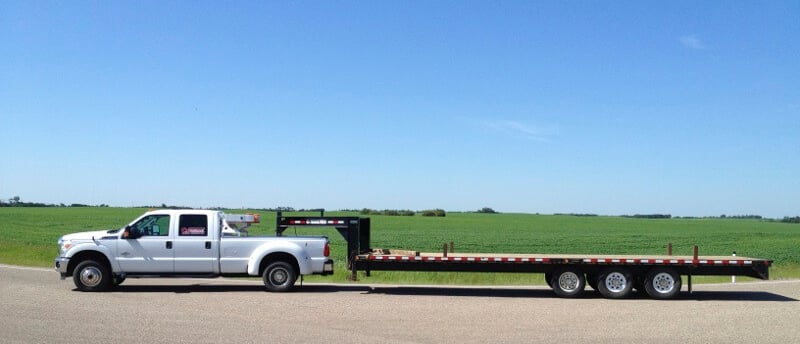HOT SHOT
How does a HOTSHOT work?
12/18/20242 min read


How does a HOTSHOT work?
A hotshot truck is a type of delivery vehicle commonly used for transporting time-sensitive, smaller loads over short to medium distances. Hotshot trucking is typically employed when urgent deliveries are required, often involving freight that needs to be moved quickly but doesn't necessarily require a full-sized truck or long-haul logistics. Hotshot trucks are especially popular in industries like construction, oil and gas, and automotive, where fast delivery of equipment and parts is crucial.
Design and Structure
A hotshot truck usually consists of a pickup truck or a medium-duty truck with a flatbed or trailer attached to it. The vehicle is often equipped with a gooseneck or bumper-pull trailer to carry various types of cargo. The trailer is usually smaller than those used in traditional long-haul trucking, which makes hotshot trucking a flexible and efficient option for delivering smaller loads that need to be transported quickly. Hotshot trucks typically carry loads ranging from a few hundred pounds to 10,000 pounds, depending on the size of the truck and trailer used.
Loading and Unloading
Loading and unloading a hotshot truck is similar to other types of flatbed trucks. Depending on the type of cargo, forklifts, cranes, or ramps may be used for loading heavy or bulky items onto the flatbed. Hotshot trucking is often used to deliver machinery, parts, or specialized equipment that needs to be delivered to various locations, such as construction sites or oil rigs. The smaller size of the hotshot truck allows for easier navigation into tight spaces or urban areas, where larger trucks may have difficulty maneuvering or parking.
Types of Cargo Transported
Hotshot trucks are typically used for transporting smaller, time-sensitive loads that need to be delivered quickly. Common types of cargo include construction materials, automotive parts, industrial equipment, and machinery. Hotshot trucking is frequently employed for urgent shipments in industries like oil and gas, agriculture, and manufacturing, where delays could cause significant disruptions. Since hotshot trucks are more nimble and faster than traditional long-haul vehicles, they are ideal for shipments that require quick turnaround times.
Advantages of Hotshot Trucking
One of the main advantages of hotshot trucking is its speed and flexibility. Hotshot trucks can quickly deliver smaller loads over short to medium distances, typically within a few hundred miles. This makes them ideal for urgent deliveries where time is of the essence. Additionally, because hotshot trucks are smaller than traditional freight trucks, they can access areas that may be difficult for larger trucks to navigate. This allows hotshot drivers to take routes that are more direct and avoid delays caused by larger trucks needing to find alternative routes.
Operation During Transit
Once the cargo is secured on the trailer, the hotshot truck operates similarly to any other truck, but with an emphasis on speed and efficiency. Hotshot drivers are often required to have a commercial driver’s license (CDL) depending on the weight of the load and the type of vehicle used. Hotshot trucks typically travel shorter distances than long-haul trucks and are often used for multiple deliveries in a single day, making them a more cost-effective option for smaller, time-sensitive shipments. The focus on speed means that drivers may need to navigate quickly and efficiently, making timely deliveries as required.
Benefits and Use
Hotshot trucking is ideal for industries where fast, flexible, and smaller-scale deliveries are needed. It provides businesses with an efficient way to ship smaller loads quickly, whether it's critical parts for construction, machinery for manufacturing, or equipment for oilfield operations. The ability to navigate tight spaces and meet urgent demands makes hotshot trucks an essential part of supply chains that require speed and versatility.
